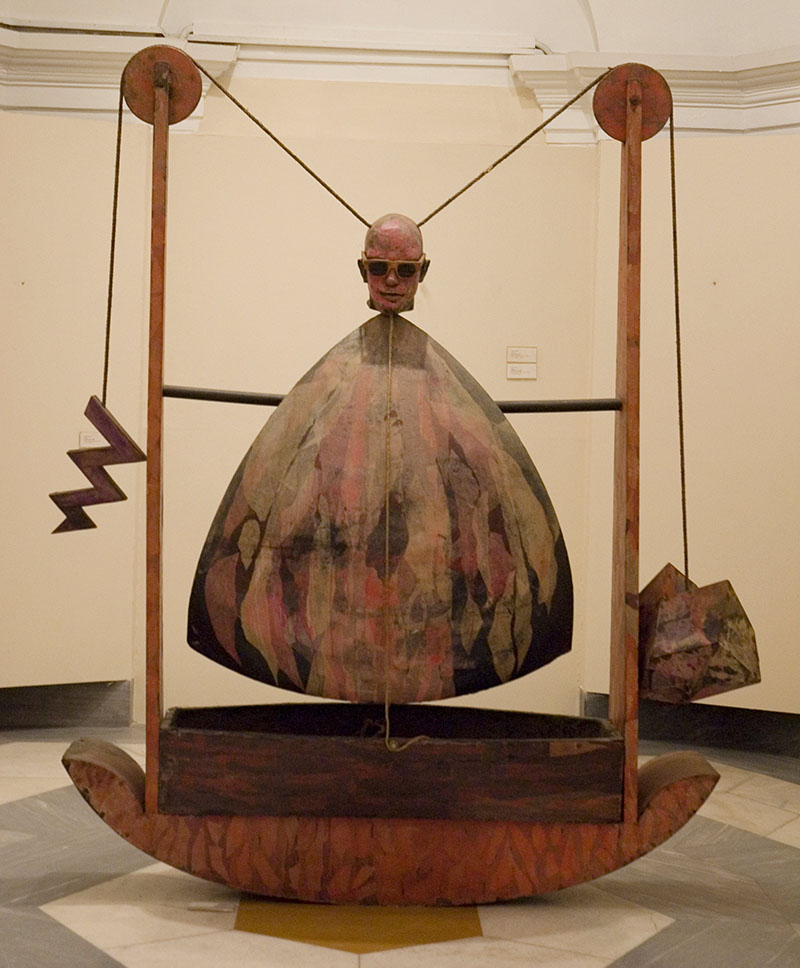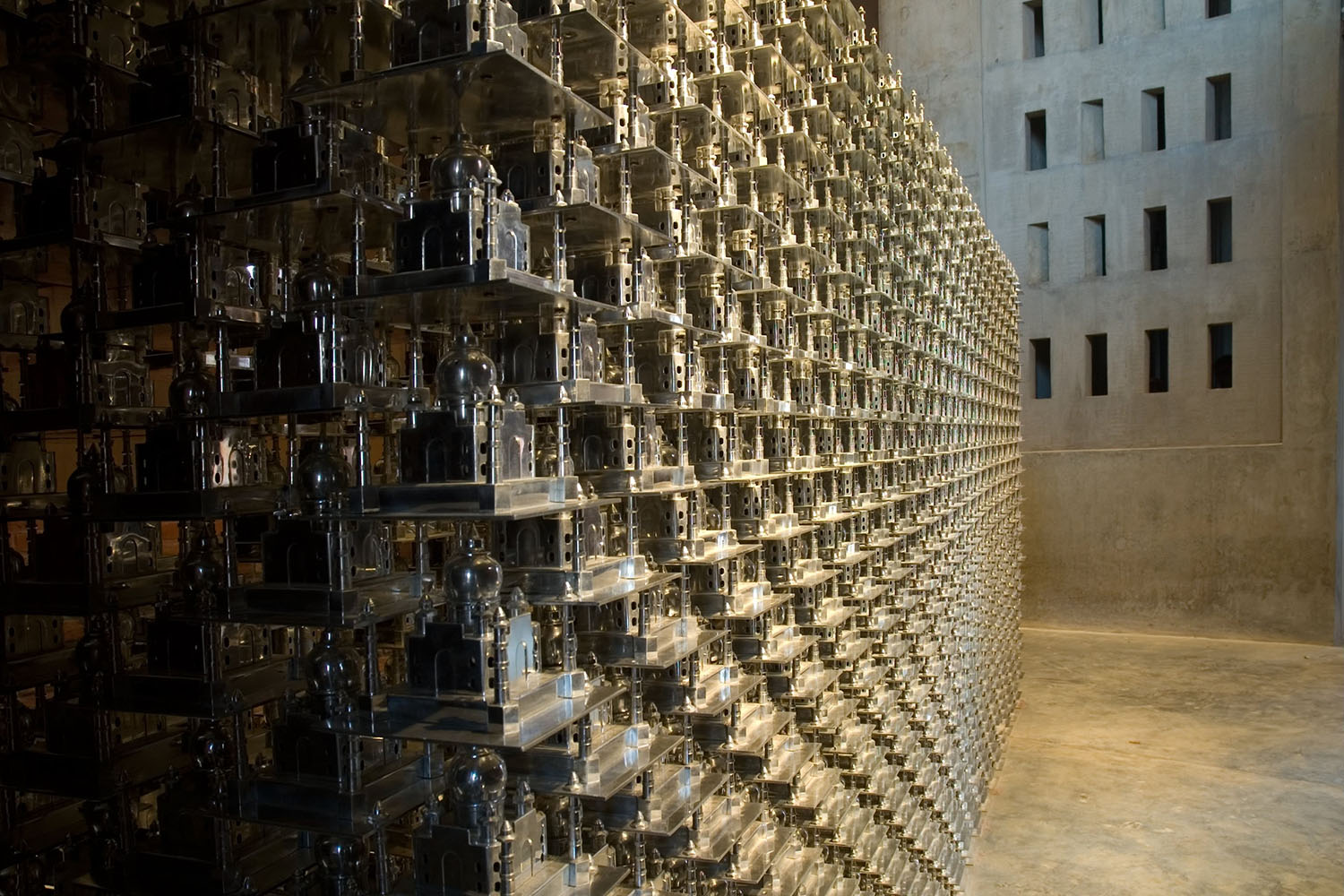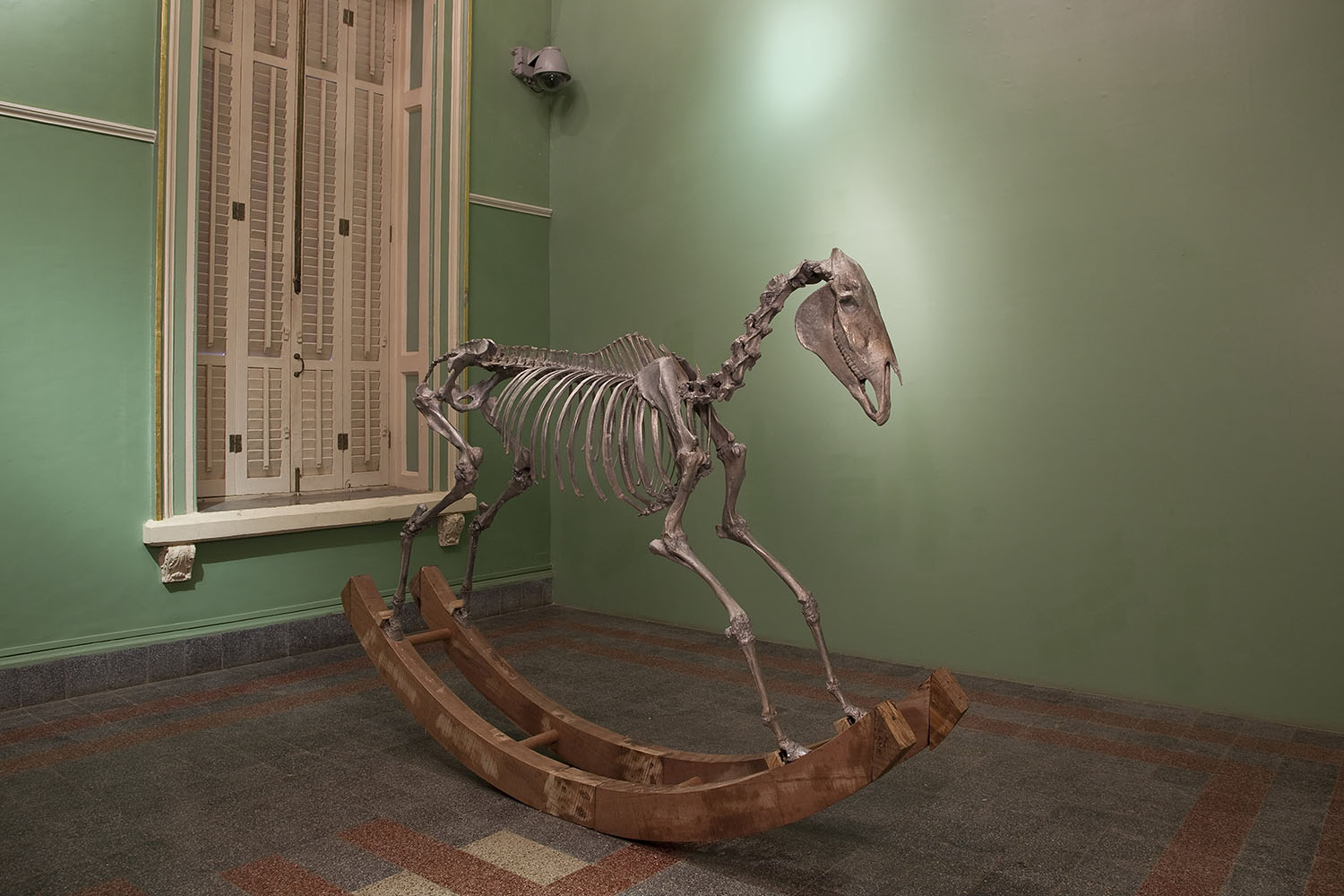Known for sculptural installations and multimedia work, Sudarshan Shetty’s practice explores the mechanical animation of objects, and the philosophical implications of the possibility of imitating human gestures. He also uses repetitive movement to interrogate presence and subjective experience. His work relies on juxtaposing ordinary objects to evoke transience, absence, love and loss.
Shetty was born in Mangaluru (formerly Mangalore) and grew up in Mumbai (formerly Bombay), where he studied in a Kannada-medium school, spoke Tulu and developed an interest in Kannada literature. His father was a Yakshagana Talamaddale artist, and Shetty was deeply influenced by the music, storytelling, songs, characters, rituals and transformations he grew up around. This early exposure to text, poetry, songs, and stories allowed Shetty to play with scale and material in a way that privileges the subject, helping him escape the conventions and mannerisms of sculpture. Formally trained as a painter at the JJ School of Art where he obtained a BFA in 1985, he gradually shifted to working with sculpture, video and installation art. His early works were a combination of paintings and found objects that he painted. Later, he served as visiting faculty at the National Institute of Design (NID) in 1987 and received a fellowship to work at the Kanoria Centre for Arts, Ahmedabad, from 1989–91.
Shetty experiments with a variety of materials, including readymades, machine parts, everyday objects and electronic media. His works employ DIY techniques and aim to parody the natural order of things through the manipulation of scale, repetition and multiplicity. Shetty is part of a generation of post-liberalisation artists disenchanted with the ideals of nationalism and socialism who gravitated towards images of commodification, hedonism and media. The resultant fascination with kitsch and interest in parody and lightness are evident in Shetty’s monumental toy-like installations in his early international solo shows such as For Here or To Go (2001) at the Fukuoka Asian Art Museum, Japan.
Shetty rejects the colonial framing of “artist as ethnographer” in his work, instead staging a different kind of politics, where the relationship to a place is not self-evident but is constructed through memory and perceptions of the city. Shetty’s work is shaped by Mumbai, particularly its second-hand markets such as Chor Bazaar. His process involves recycling materials salvaged from the collapsing or dismantling of urban topographies to highlight the cyclical nature of biological life. Shetty’s performance Party is Elsewhere (2005), shown in empty galleries in south Mumbai and Paris, characterises his ideas around location and memory: two tables covered with wine glasses are pounded by mechanised hammers mounted on adjacent walls, while a neon sign bearing the title of the performance flashes overhead. The piece also sat between the interior space and the street in a way that it was only partially visible to the guests yet completely visible to people in the street. His solo show Love (2006), conversely, brought the street and other industrial sites of mass entertainment, such as the amusement park and the gaming arcade, into the gallery space. The show also played with the dualities of preservation and perversion of memory, with objects ranging from a skeletal steel dinosaur mating with a 1950s Jaguar Coupé recast in fibreglass to a large refurbished Brailler with brass fingers denoting the prosthetic extension of vision.









